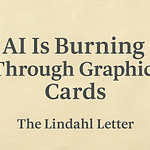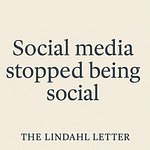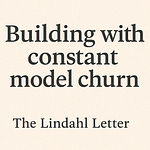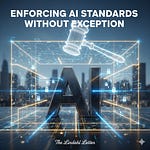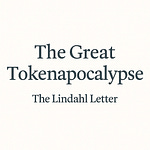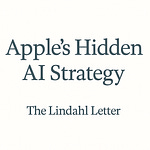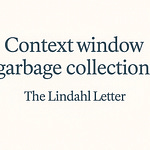Thank you for tuning in to this audio-only podcast presentation. This is week 197 of the Lindahl Letter publication. A new edition arrives every Friday. This week, the topic under consideration for the Lindahl Letter is, “Magic state distillation explained.”
We have spent the last 3 weeks digging into quantum computing. That journey involved looking at the top 10 quantum computer leaderboard, annealing vs. gate-based systems, and the reality of enterprise plays. Trying to figure out where the edge of what is possible for quantum computing actually exists is a tricky proposition. A lot of roadmaps and promises exist in this space. People have plans, and they seem reasonable. It however, is hard to figure out what parts of them are actually real and delivering. We have seen some major movement in announcements for quantum error-reduction, which is a major step or part of a lot of roadmaps. News is going to keep breaking as we get closer to fault-tolerance. One of those breakthroughs is explained in a paper about magic state distillation that was submitted back in 2024, but just officially was published this month. The good people at the University of Osaka published a paper called, “Efficient Magic State Distillation by Zero-Level Distillation” [1]. The full citation for that 12-page paper happens to be:
Tomohiro Itogawa, Yugo Takada, Yutaka Hirano, Keisuke Fujii. Efficient Magic State Distillation by Zero-Level Distillation. PRX Quantum, 2025; 6 (2) DOI: 10.1103/thxx-njr6
Sure, improving how we use magic states is a key element of unlocking one of the top bottlenecks in quantum hardware design. The more base hardware elements that can be incorporated the lower the ceiling falls for practical implementation of quantum systems. You can read the PDF online, and the paper is readable if you are willing to look up a few terms that are commonly used in the quantum computing space [2]. You are probably well aware by now that I’m super duper interested in better understanding where gate-based quantum computing is heading in the next couple of years. This paper happens to dig into a subset of gate-based quantum computing called the Clifford operations. This is where a lot of things start as it is a well defined space. A Clifford operation is a quantum gate operation or circuit that maps Pauli operators to other Pauli operators under conjugation and can be composed of Hadamard, Phase, and CNOT gates. Think base actions or building blocks that need to be taken as part of a quantum system. A Pauli operator is one of the four fundamental 2×2 matrices (I, X, Y, Z) used to represent quantum bit-flip, phase-flip, and identity operations, forming the core building blocks of quantum error correction and circuit analysis.
This paper introduces a new technique called zero-level distillation, which dramatically simplifies how quantum computers prepare the special “magic” states needed for universal computation. Traditionally, this process required error-corrected logical qubits, making it slow and resource-intensive. The team at the University of Osaka figured out how to do this more efficiently at the physical qubit level, verify the state using error-detecting circuits, and then teleport the result into a fully protected logical qubit. This method reduces both error rates and resource costs, bringing us one step closer to practical, large-scale quantum computers. It will be interesting to see how this advancement gets built into practical hardware implementations. I was digging into an advance shared by the Microsoft Quantum team related to a new four-dimensional geometric code method trying to figure out if this used a hardware-based method or something post-hardware [3]. That paper is 40 pages long and goes into a degree of depth that is interesting, but could have benefited from a brief summary beyond the provided abstract.
Aasen, D., Hastings, M. B., Kliuchnikov, V., Bello-Rivas, J. M., Paetznick, A., Chao, R., ... & Svore, K. M. (2025). A Topologically Fault-Tolerant Quantum Computer with Four-Dimensional Geometric Codes. arXiv preprint arXiv:2506.15130.
Still wanting to learn more? You can pretty easily do a Google Scholar search for “efficient magic state distillation” and you will get a bunch of different papers you can read [4]. It did not hold my interest enough for me to pull out key papers for you, but it was a thread that almost got pulled.
This week I want to include a bonus topic from a video I watched on YouTube, “Quantum Complexity: Scott Aaronson on P vs NP and the Future.”
Aaronson explains that while P ≠ NP is widely believed, quantum computing does not resolve this distinction or solve NP-complete problems efficiently. He introduces BQP or Bounded-Error Quantum Polynomial Time as the class of problems solvable by quantum computers, noting that quantum speedups like those from Grover’s and Shor’s algorithms can apply only to problems with specific structure. Aaronson concludes that quantum computing offers significant but limited advantages, and that future breakthroughs will depend on understanding the deep complexity boundaries that define its capabilities. You could dig into the very large paper Aaronson released about computational complexity [5]. It’s 59 pages and I downloaded it to give it a read later this week.
What’s next for the Lindahl Letter? New editions arrive every Friday. If you are still listening at this point and enjoyed this content, then please take a moment and share it with a friend. If you are new to the Lindahl Letter, then please consider subscribing. Make sure to stay curious, stay informed, and enjoy the week ahead!
Footnotes:
[1] The University of Osaka. (2025, June 26). Quantum breakthrough: ‘Magic states’ now easier, faster, and way less noisy. ScienceDaily. Retrieved July 12, 2025 from www.sciencedaily.com/releases/2025/06/250621233816.htm
[2] Tomohiro Itogawa, Yugo Takada, Yutaka Hirano, Keisuke Fujii. Efficient Magic State Distillation by Zero-Level Distillation. PRX Quantum, 2025; 6 (2) DOI: 10.1103/thxx-njr6
https://journals.aps.org/prxquantum/abstract/10.1103/thxx-njr6
https://journals.aps.org/prxquantum/pdf/10.1103/thxx-njr6
[3] https://azure.microsoft.com/en-us/blog/quantum/2025/06/19/microsoft-advances-quantum-error-correction-with-a-family-of-novel-four-dimensional-codes/ you can read the paper here https://arxiv.org/abs/2506.15130
[4] https://scholar.google.com/scholar?hl=en&as_sdt=0%2C6&q=Efficient+Magic+State+Distillation&btnG=
[5] Scott Aaronson, “Why Philosophers Should Care About Computational Complexity” https://www.scottaaronson.com/papers/philos.pdf





